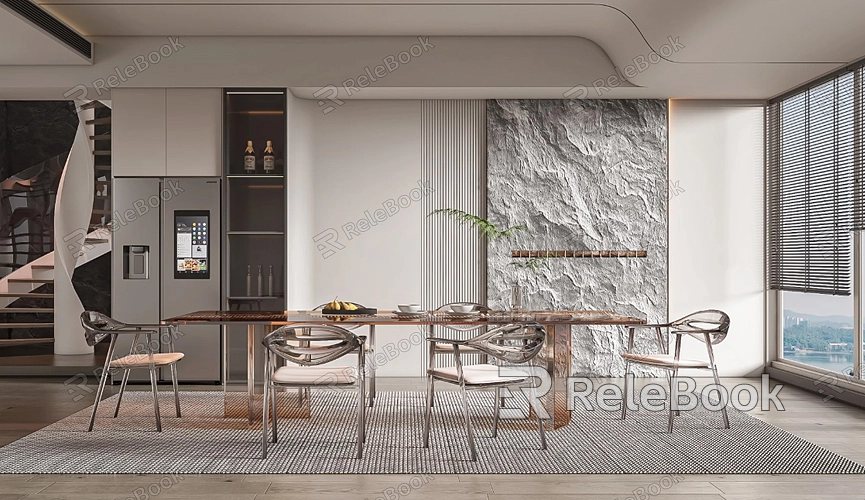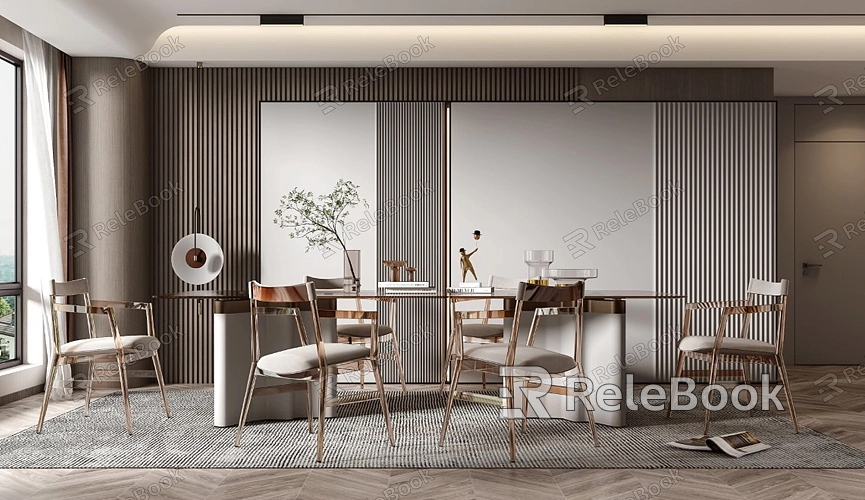what is the workflow of a 3d model?

Conceptualization and Planning
The first step in the 3D modeling workflow is conceptualization. This stage involves brainstorming, sketching, and planning the model. The concept phase is crucial as it lays the foundation for everything that follows. At this stage, artists usually create rough sketches or storyboards that outline the general shape, proportions, and style of the model. If you're working on a character model, this may include various poses or expressions, while an architectural model may require multiple views and details.
In addition to sketching, research plays a vital role. Reference images, real-world objects, and similar existing models provide valuable insights into how your final model should look and behave. Planning the model's complexity, scale, and purpose will guide your choices in the subsequent steps, making this initial phase a cornerstone of the entire 3D modeling workflow.
Modeling
Once the concept is clear, the actual creation of the 3D model begins. This stage involves the use of 3D modeling software such as Blender, Maya, 3ds Max, or ZBrush. The choice of software depends on the complexity of the model and the artist’s familiarity with the tools.
The modeling process generally follows one of two paths: polygonal modeling or sculpting.
1. Polygonal Modeling
This is the most common technique, where the model is constructed using polygons, usually starting with basic shapes like cubes, spheres, or cylinders. These shapes are then modified and refined by adjusting vertices, edges, and faces. Polygonal modeling is ideal for hard-surface models like buildings, vehicles, or any object with defined edges and surfaces.
2. Sculpting
This technique is more akin to clay modeling, where the artist sculpts the model using brushes that mimic traditional sculpting tools. Sculpting is often used for organic models, such as characters or creatures because it allows for a high level of detail and intricate surface textures.
During this phase, artists must also consider the topology of the model, ensuring that the mesh is clean, efficient, and optimized for animation if necessary. Poor topology can lead to issues later in the process, so it’s important to address any problems during the modeling stage.

Texturing
Texturing is the process of applying color, patterns, and surface details to the 3D model. This step is essential for bringing the model to life, as textures provide the visual richness and realism that make the model appear authentic.
The texturing process begins with UV mapping, which involves unwrapping the 3D model onto a 2D plane so that textures can be accurately applied. UV mapping can be a meticulous process, requiring careful attention to ensure that textures do not stretch or distort.
Once the UV map is prepared, artists create or apply textures using software like Adobe Substance Painter, Photoshop, or Mari. Textures can range from simple color maps to more complex maps such as normal maps, bump maps, specular maps, and displacement maps. These maps help to simulate details like surface roughness, reflections, and depth, adding realism to the model.
Rigging and Skinning (Optional)
If the 3D model is intended for animation, the next step in the workflow is rigging and skinning. Rigging involves creating a skeleton or armature that defines how the model will move. This skeleton is made up of bones and joints, which control the movement of the model.
Skinning is the process of binding the 3D model to the rig. During skinning, artists assign different parts of the model to specific bones, allowing for smooth and natural movement. The goal is to ensure that when the rig is manipulated, the model deforms realistically, without any unwanted stretching or collapsing of the mesh.
Rigging and skinning are crucial for character models or any object that requires complex movement. However, this step can be skipped for static models, such as architectural structures or product designs.
Animation (Optional)
For models that need to move, the animation process follows rigging and skinning. This step involves creating keyframes, which are specific points in time where the model is in a particular position. The software then interpolates the in-between frames, creating smooth motion.
Animation can be as simple as moving a car across the screen or as complex as creating a full-character performance with lip-syncing, facial expressions, and body movement. Tools like Maya, Blender, and Cinema 4D are commonly used for animation, each offering a range of features to bring 3D models to life.
Lighting
Lighting plays a crucial role in the presentation of a 3D model. It affects the mood, depth, and realism of the scene. In this stage, artists place lights in the 3D environment to illuminate the model in a way that highlights its features and textures.
Different types of lights can be used, such as point lights, spotlights, and directional lights, each providing a unique effect. The placement and intensity of lights need to be carefully considered, as poor lighting can ruin an otherwise excellent model by making it appear flat or washed out.
Artists also consider how the model interacts with light, using techniques like Global Illumination (GI) to simulate how light bounces off surfaces, and Ambient Occlusion (AO) to add depth by darkening creases and corners where light doesn’t reach.
Rendering
Rendering is the process of generating the final image or animation from the 3D model. This step transforms the 3D scene into a 2D image or video file, complete with lighting, shadows, textures, and other effects.
Rendering can be done using different engines, such as Arnold, V-Ray, or Blender’s Cycles. The choice of engine depends on the project requirements and the desired level of realism. Rendering is often the most time-consuming part of the 3D modeling workflow, especially for highly detailed scenes with complex lighting and textures.
Artists can choose between real-time rendering, which is faster but less detailed, and offline rendering, which provides high-quality images but takes longer to process. The output from the rendering stage is typically the final deliverable, whether it’s a still image, a video, or a sequence of images for an animation.
Post-Processing
After rendering, the final step in the 3D modeling workflow is post-processing. This stage involves refining the rendered image or animation using compositing and editing software like Adobe After Effects, Nuke, or Photoshop.
Post-processing may include color correction, adding motion blur, depth of field effects, or combining multiple render passes (e.g., shadow, reflection, and ambient occlusion passes) into a single image. This step is crucial for polishing the final output, ensuring it meets the desired aesthetic and quality standards.
FAQ
What software do I need for 3D modeling?
Popular 3D modeling software includes Blender, Autodesk Maya, 3ds Max, and ZBrush. The choice depends on your specific needs and experience level.
Do I need to know how to draw to be a 3D modeler?
While drawing skills can be helpful, they are not mandatory. Many 3D artists use reference images and rely on their understanding of shapes and proportions.
How long does it take to create a 3D model?
The time required depends on the model's complexity, the level of detail, and the artist's experience. Simple models may take a few hours, while complex ones can take days or weeks.
Can I animate a model without rigging it?
Rigging is essential for complex animations, but simple animations like moving or rotating objects can be done without a rig.
What is the difference between real-time and offline rendering?
Real-time rendering is faster and often used in video games, while offline rendering provides higher-quality images and is used in film and advertising.

